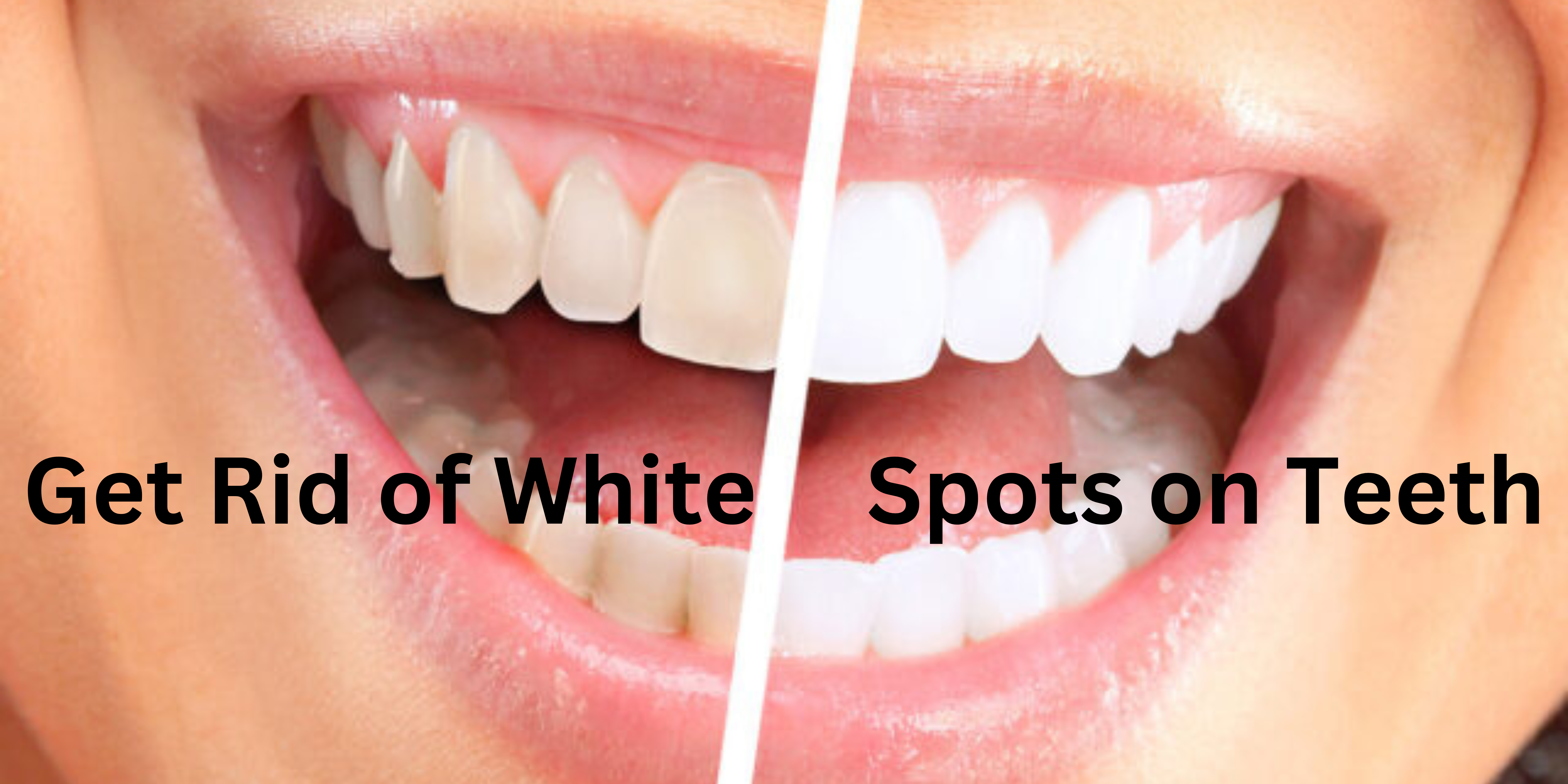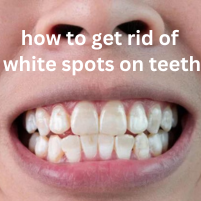White spots on teeth can be unsightly and embarrassing—Discover 10 practical ways to remove them and restore your smile with this helpful guide.

Have you ever looked in the mirror and noticed that your pearly whites aren’t looking quite so pearly? If so, chances are you have white spots on your teeth. While these white spots might be a temporary annoyance, it is essential to determine their cause and address them adequately to protect your teeth from further damage.
The favorable news is that if you have noticed white spots on your teeth, you can do something about it. This article will discuss what causes white spots and how to fight them.
We will explore techniques such as avoiding certain foods, taking proper oral hygiene measures, and regularly visiting the dentist. Armed with this knowledge, you can take steps to protect your smile.
What Causes White Spots on Teeth?
White spots on your teeth may appear weird or unsightly, but don’t be alarmed—they’re more common than you think! Various factors can lead to white spots on teeth, and understanding them is a significant step toward eliminating them.
Poor diet and hygiene are the most common cause of white spots on teeth. Eating lots of sugary or acidic foods and drinks can erode the enamel over time, leaving white marks on the tooth’s surface. The same goes for not brushing your teeth or practicing ineffective dental care.
Another factor contributing to white spots on teeth is fluorosis—in other words, overexposure to fluoride during tooth development stages. This overexposure usually happens when too much fluoride accumulates in the body over time and gets deposited onto developing teeth.
Injury to the tooth can also result in white spots, as the damaged area doesn’t produce enough enamel. Certain medications, like antibiotics, can also cause discoloration due to decreased saliva production, leading to higher bacterial growth in the mouth.
So be sure to follow good oral hygiene habits and watch for any other potential causes of white spots you may have!
Get Rid of White Spots on Your Teeth
Removing white spots on your teeth can be difficult but not impossible. A few treatment options are available to help you eliminate the spots and restore your smile.
The first option is to use a composite resin. This type of resin is applied directly to the affected area. It may be used to cover white spots and make them less noticeable.
Another option is to use teeth whitening or bleaching. This method can help lighten the overall color of the enamel and make white spots less visible.
Finally, dental veneers are an effective way of covering up unsightly white spots on teeth. Veneers are thin shells custom-made for each patient and bonded onto their existing teeth for a natural-looking result.
In addition to these treatments, a dentist may recommend topical fluoride to treat white spot lesions and professional teeth whitening for more severe cases. Microabrasion and resin infiltration may also be used in more extreme cases of white spots on teeth.
Treatment Options
If you have witnessed white spots on your teeth, don’t despair. There are many treatments available that can help restore your smile and bring back its original enamel color.
 Microabrasion
Microabrasion
Microabrasion is a minimally invasive treatment for white spots on teeth. This procedure removes a thin enamel layer to restore the tooth’s natural color. The dentist will then apply a block of special dental cement to replace the enamel and strengthen the tooth’s protective covering.
 Teeth Whitening/ Bleaching and Dental Veneers
Teeth Whitening/ Bleaching and Dental Veneers
Teeth whitening and bleaching are other standard treatments for white spots on teeth. Both procedures use a chemical solution to help lighten the surface of your teeth, giving them a brighter and whiter appearance.
Dental veneers are also an option. These are thin shells of porcelain placed over your existing teeth to make them look more uniform in color and size.
 Other Treatments
Other Treatments
Other treatment options may include composite resin, managing tooth decay, avoiding sugary foods, fluoride-free toothpaste or mouthwash to help repair soft white spots, or even laser whitening if the spots are too stubborn to remove with other methods.
Resin infiltration is another technique used for white spot removal; it involves removing a thin layer of enamel and applying a tooth-colored resin to cover up any discoloration caused by the blemishes.
Home Remedies for White Spots on Teeth
If you want to remove white spots from your teeth, you can try some natural remedies at home. Low-cost and widely available ingredients like vinegar, baking soda, hydrogen peroxide, and oil can help restore the brightness of your smile.
 Vinegar
Vinegar
Apple cider vinegar is a simple remedy that can help remove white spots on teeth. Its acidic properties can help dissolve the minerals that cause the defects.
Swirl one tablespoon of apple cider vinegar with one cup of water and waggle it in your mouth for a few minutes before spitting it out and rinsing it with water. Be sure to use this remedy in moderation, as excessive use can damage tooth enamel.
 Baking Soda
Baking Soda
Vinegar can be mixed with baking soda to make a paste to help remove teeth’ white spots. This method is based on the idea that the acidic properties of vinegar work to dissolve the calcium deposits on teeth.
To use it:
- Mix a tablespoon of baking soda with three tablespoons of white vinegar. Add a little water until you have a thick paste.
- Put the paste onto your toothbrush and brush gently for two minutes.
- Rinse your mouth with warm water.
This mixture can help remove surface stains and brighten your teeth. However, using this method sparingly is important as overuse can damage tooth enamel.
 Hydrogen Peroxide
Hydrogen Peroxide
Hydrogen peroxide is another natural way to whiten teeth and remove white spots. Mix equivalent quantities of hydrogen peroxide and water in a cup, then dip your toothbrush in the solution and brush it as you would with regular toothpaste. Leave it on for one minute before flushing it with warm water.
 Oil Pulling
Oil Pulling
Oil pulling has been used as a home remedy for centuries to eliminate white spots on teeth. For this method, swish about one tablespoon of oil (such as coconut or sesame) around your mouth for about 20 minutes, then spit the oil into a trash can (not down the sink).
Rinse your mouth with warm water afterward. Repeat this process every day for several weeks until you see results!
 Apply Fluoride Treatment.
Apply Fluoride Treatment.
Fluoride is a mineral that can assist in strengthening tooth enamel and preventing decay. Applying a fluoride treatment to your teeth can also help remove white spots.
Your dentist can provide a fluoride treatment in their office, or you can use an over-the-counter fluoride rinse or toothpaste at home. Follow the instructions carefully and use fluoride products in moderation to avoid damaging your teeth.
How Can I Prevent White Spots on My Teeth?
Preventing white spots on your teeth is all about good habits. Here are some rare pieces of advice that can help you keep your teeth bright and white:
- Brush and floss regularly. It should go without saying that brushing and flossing your teeth at least twice daily is essential for preventing cavities and plaque buildup. Use fluoride-free toothpaste and mouthwash to ensure they don’t cause the same issues as fluoride-filled products.
- Avoid sugary foods and drinks. Sweets, candy, soda, juices, and sports drinks can damage the enamel on your teeth over time. Sugary foods also promote the growth of bacteria in your mouth, which can lead to cavities and other dental diseases.
- Get regular dental checkups. Even if you practice good oral hygiene habits, it’s still important to get regular checkups from a dentist to catch any potential problems before they start or worsen. Your dentist may also be able to give you advice on ways to improve your dental health further — for example, using a softer toothbrush or using an antiseptic solution after brushing or flossing.
Regular Dental Checkups
Regular dental checkups are the best way to prevent and combat white spots on teeth. Your dentist can help look for signs of white spots on your teeth and work with you to create a plan to prevent them.
Good oral hygiene is key in preventing white spots. Regular dental checkups can help identify any bacteria buildup or plaque accumulation that could cause further damage. If white spots have already appeared, they can also help determine the exact cause, ensure they don’t worsen, and guide you through appropriate treatment.
Regular dental checkups ensure that your teeth stay healthy and that any underlying illness, infection, vitamin deficiency, excess fluoride, or even trauma to the tooth is identified early on and taken care of before it has a chance to lead to any further problems.
And since nobody wants white spots on their pearly whites, we must make regular visits to our dentist part of our routine!
Conclusion
White spots on teeth can be driven by various things, from diet to fluoride use to the natural aging process. To keep your teeth free from white defects, practice a good oral hygiene routine, including brushing and flossing twice daily and scheduling regular dental checkups.
Eating a healthy diet low in sugar and acid is essential as avoiding acidic drinks like soda and citrus juices. Treatments, including bleaching, bonding, and veneers, are available if you detect white spots on your teeth.
Ultimately, no matter what causes white spots on your teeth, visiting your dentist is the best way to determine the best course of action to maintain your pearly whites looking their best.
*****The content on this website is intended for information purposes only. It does not constitute medical advice. The information on this website should not be relied upon and is not a substitute for professional medical advice. It would help if you always spoke to your doctor regarding the risks and benefits of any treatment.****

